[Editor’s Note: Mad Scientist Laboratory welcomes back returning guest blogger and proclaimed Mad Scientist Caroline Duckworth with today’s post addressing the challenges the Operational Environment (OE) presents the Army in sustaining its Recruit to Unit pipeline so essential to Multi-Domain Operations. This OE is characterized by demographic changes and shifts, technology innovations, and economic challenges that make recruiting increasingly difficult. Fewer people will be available, eligible, and physically accessible to recruit. The new generation of recruits will expect their professional lives to mirror the more connected world. Finally, while the  economy of 2030 is unknown, we can safely assume that the strains of an aging U.S. population will limit discretionary funding for the military. Successfully recruiting the greatest All-Volunteer Force in the world will require new ways to recruit and improved policies. Accessions will face key demographic, technological, and economic challenges that the Army must address if we are to successfully compete and win — Read on!]
economy of 2030 is unknown, we can safely assume that the strains of an aging U.S. population will limit discretionary funding for the military. Successfully recruiting the greatest All-Volunteer Force in the world will require new ways to recruit and improved policies. Accessions will face key demographic, technological, and economic challenges that the Army must address if we are to successfully compete and win — Read on!]
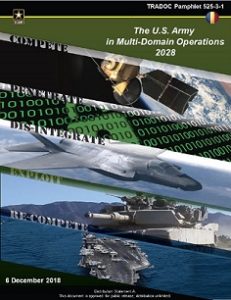 In 2018, the U.S. Army published its concept for Multi-Domain Operations (MDO) through 2028. The TRADOC Pamphlet identifies three baseline assumptions, the first of which reads, “The U.S. Army will remain a professional, all-volunteer force, relying on all components of the Army to meet future commitments.” While it is thus a stated priority to remain an all-volunteer force, the Army will need to be proactive to address looming recruitment challenges that threaten its success.
In 2018, the U.S. Army published its concept for Multi-Domain Operations (MDO) through 2028. The TRADOC Pamphlet identifies three baseline assumptions, the first of which reads, “The U.S. Army will remain a professional, all-volunteer force, relying on all components of the Army to meet future commitments.” While it is thus a stated priority to remain an all-volunteer force, the Army will need to be proactive to address looming recruitment challenges that threaten its success.
 Though the U.S. military has been a volunteer organization since 1973, experts are increasingly concerned that an all-volunteer force may not be sustainable in the Operational Environment (OE). Demographic, health, social, and economic trends are all likely to reduce the U.S. public’s propensity to serve, forcing the Army to rely on an ever smaller, more insulated, and less diverse cohort of Soldiers. To ensure mission success, the Army needs to recognize that it cannot take an all-volunteer force for granted.
Though the U.S. military has been a volunteer organization since 1973, experts are increasingly concerned that an all-volunteer force may not be sustainable in the Operational Environment (OE). Demographic, health, social, and economic trends are all likely to reduce the U.S. public’s propensity to serve, forcing the Army to rely on an ever smaller, more insulated, and less diverse cohort of Soldiers. To ensure mission success, the Army needs to recognize that it cannot take an all-volunteer force for granted. 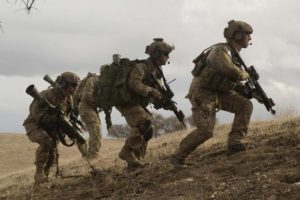 Instead, it should assume that recruitment and retention will only become more challenging and should acknowledge the myriad of threats that are emerging to the maintenance an all-volunteer force.
Instead, it should assume that recruitment and retention will only become more challenging and should acknowledge the myriad of threats that are emerging to the maintenance an all-volunteer force.
Demographic Change: A Smaller Recruiting Pool
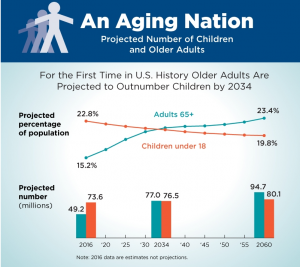
The U.S. Census Bureau predicts that by 2034, people aged 65 and over will outnumber those under age 18. Birth rates in the United States have been declining for more than a decade, and decreased even more during the pandemic. Not only will the aging population stress Social Security and strain the government’s budget, but it will also reduce the size of the Army’s future recruiting pool.
 The threat of an aging population to military recruitment has been extensively explored, often referencing Japan as a case study. In 2021, the ratio of Japan’s population under age 14 fell to its lowest point in almost 50 years; these children made up under 12% of its population. The country’s fertility rate has been below replacement rate (2.1 births per woman) since 1974. These trends, combined with a waning interest in military participation, have contributed to Japan’s Self-Defense Forces’ (SDF) well publicized recruitment woes. SDF has missed
The threat of an aging population to military recruitment has been extensively explored, often referencing Japan as a case study. In 2021, the ratio of Japan’s population under age 14 fell to its lowest point in almost 50 years; these children made up under 12% of its population. The country’s fertility rate has been below replacement rate (2.1 births per woman) since 1974. These trends, combined with a waning interest in military participation, have contributed to Japan’s Self-Defense Forces’ (SDF) well publicized recruitment woes. SDF has missed 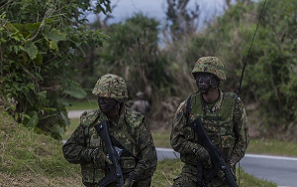 its recruitment targets since 2014. In an effort to adjust, the force changed its recruitment age cap from 26 to 32 years of age in 2018. Unfortunately, it is predicted that the pool of eligible recruits will still shrink by 30% over the next 40 years.
its recruitment targets since 2014. In an effort to adjust, the force changed its recruitment age cap from 26 to 32 years of age in 2018. Unfortunately, it is predicted that the pool of eligible recruits will still shrink by 30% over the next 40 years.
The Japanese demographic challenge is certainly more daunting than that faced by the United States. The U.S. fertility rate fell below replacement rate in 2008, and the U.S. military recruited its target levels of full-time troops in the 2021 fiscal year. However, the case should still be concerning, given that initial recruiting data from FY22 is not so sanguine. The Army missed “its goal of recruiting 10,400 new members for the active-duty force by several thousand,  only recruiting 7,340 new members in October and November 2021. The Army recently announced it is offering a bonus of up to $50,000, the largest amount ever, to some new recruits who enlist for six years.” When combined with the following trends, this shortcoming is even more disconcerting.
only recruiting 7,340 new members in October and November 2021. The Army recently announced it is offering a bonus of up to $50,000, the largest amount ever, to some new recruits who enlist for six years.” When combined with the following trends, this shortcoming is even more disconcerting.
Public Health Challenges
 Already, 70% of the potential U.S. recruits aged 17-24 are disqualified from military service due to obesity, mental health issues, past drug use, or poor education. Trend analysis on these statistics do not yield promising results for Army recruitment.
Already, 70% of the potential U.S. recruits aged 17-24 are disqualified from military service due to obesity, mental health issues, past drug use, or poor education. Trend analysis on these statistics do not yield promising results for Army recruitment.
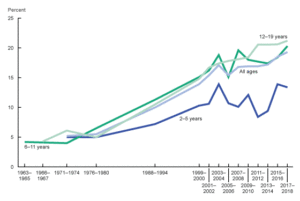
Thirty-one percent of young adults 17-24 years old are unable to join the military because they are overweight, a number that has risen since the 1970s. Even before the pandemic, analysis showed childhood obesity on the rise. Since the onset of COVID-19, however, the rise in childhood obesity has accelerated; the Centers for Disease Control and Prevention (CDC) states, “among a cohort of 432,302 persons aged 2-19 years, the rate of body mass index (BMI) increase approximately doubled during the pandemic compared to a pre-pandemic period.” While it is unknown if this elevated rate of obesity will persist, even a return to pre-pandemic obesity rates could reduce the number of recruits eligible to serve in the Army in the future.

Similarly, problems with mental health and substance abuse are on the rise. From 2007 to 2017, the number of teenagers who experienced depression increased 59%. Similarly, rates of anxiety in young adults almost doubled from 2008 to 2018. Finally, between 2016 and 2020, illicit drug use in 8th graders rose 61% (interestingly, however, teen drug use decreased significantly during 2021, despite the continuing COVID-19 pandemic). The military currently disqualifies those who have received treatment for an anxiety or depressive disorder in the last 36 months, as well as those with a history of eating disorders (which are also on the rise). Though waivers are granted in some cases, the complicated process could be discouraging for recruits. The Army has also reiterated that waivers are generally for conditions in the recruit’s past. As the diagnosis of mental health conditions increase, the number of people disqualified from service as a result of seeking treatment will follow.

Climate change will also impact the health of the future U.S. population, increasing respiratory disease, which, if it contributes to asthma, may further disqualify enlistees. Climate change will also introduce new disease vectors, changing the population’s health landscape. On top of these trends, the longitudinal impact of our current pandemic is unknown. Each of these trends is concerning for military recruiters; taken together, they are especially so.
Declining Trust & Propensity to Serve
 The military currently makes up less than 1% of the adult U.S. population. It is largely recruited from the South, and most recruits have a family member with experience in military service. Thus, the force itself is small and relatively insulated, creating a military culture that is increasingly separate from the U.S. population overall. Some analysts argue that this isolation has created a ‘familiarity gap’ which undermines the U.S. civil-military relationship by creating an environment in which the public is detached from the services, and doesn’t understand what the military does. This divide is likely contributing to the decreased propensity to serve; seeing the military as an entity separate from one’s own society and lacking an understanding of its mission certainly would not incentivize enlistment.
The military currently makes up less than 1% of the adult U.S. population. It is largely recruited from the South, and most recruits have a family member with experience in military service. Thus, the force itself is small and relatively insulated, creating a military culture that is increasingly separate from the U.S. population overall. Some analysts argue that this isolation has created a ‘familiarity gap’ which undermines the U.S. civil-military relationship by creating an environment in which the public is detached from the services, and doesn’t understand what the military does. This divide is likely contributing to the decreased propensity to serve; seeing the military as an entity separate from one’s own society and lacking an understanding of its mission certainly would not incentivize enlistment.
Decreased understanding in and increased isolation from the military may also contribute to the decline in trust the institution has seen in recent years. Disinformation, public scandals, and unpopular policies have contributed to  distrust in government institutions overall, but particularly in foreign policy. In 2021, Gallup reported an all-time low in U.S. citizens’ “trust in the government to handle international problems.” While the military historically was able to maintain a favorable view separate from that of the government at-large, it appears that may no l
distrust in government institutions overall, but particularly in foreign policy. In 2021, Gallup reported an all-time low in U.S. citizens’ “trust in the government to handle international problems.” While the military historically was able to maintain a favorable view separate from that of the government at-large, it appears that may no l onger be the case. Young citizens specifically show the lowest trust in the U.S. military, and are less likely to define themselves as very patriotic. As a result, younger generations may find both government and military service less appealing, adding to the military’s recruitment problem and making it difficult to sustain an all-volunteer force.
onger be the case. Young citizens specifically show the lowest trust in the U.S. military, and are less likely to define themselves as very patriotic. As a result, younger generations may find both government and military service less appealing, adding to the military’s recruitment problem and making it difficult to sustain an all-volunteer force.
Competition for Talent
Historically, the Army has offered young recruits with a pathway to the middle class via initial skills qualifications and subsequent on-the-job training, building progressive proficiency in career fields that led to lucrative post-enlistment employment. In post-industrial America, the Army faces increased competition from Trades, Tech Schools, and Higher Education offering talented young citizens similar pathways to well-paying careers and the middle class, without the associated familial disruptions from deployments and the risk of combat.

The Army will continue to compete with the private sector for a smaller number of eligible recruits. As the military adapts to a technology-heavy environment, the Army will require more recruits with technical skillsets. A premium will be placed on premier skills in fields such as AI and machine learning, robotics, big data management, and quantum information sciences. Due to the high demand for these skillsets in industry, however, the Army will have to compete with private companies to attract recruits, with the private sector potentially offering higher compensation, competitive benefits and perks, and a less restrictive work environment.

Considering these disparities, the Army may struggle to maintain the appropriate level of recruitment to sustain an all-volunteer force.
What can the Army do?
These trends all threaten the sustainability and success of an all-volunteer military force. While they may change over time and may not yet constitute a full crisis, it is still in the Army’s best interest to prepare for recruitment to be more challenging in the future. So how can the Army adapt to this aspect of the OE?
1. Pivot to automation and invest in technology development. The military has already been decreasing in size for decades. Investing more heavily in automated technologies will help the Army operate efficiently  with fewer people. Machine Learning (ML) / Artificial Intelligence (AI), robotics / autonomy, sensors, and edge computing have the potential to revolutionize the Operational Environment and decrease the number of Soldiers needed at any given time. Transitioning to a hybrid force dependent on man-machine teaming brings with it additional recruiting challenges, however. While operators will not necessarily need to be a coder or software developer, they will need to generally understand how technology works and why it may malfunction in order to be successful on the battlefield.
with fewer people. Machine Learning (ML) / Artificial Intelligence (AI), robotics / autonomy, sensors, and edge computing have the potential to revolutionize the Operational Environment and decrease the number of Soldiers needed at any given time. Transitioning to a hybrid force dependent on man-machine teaming brings with it additional recruiting challenges, however. While operators will not necessarily need to be a coder or software developer, they will need to generally understand how technology works and why it may malfunction in order to be successful on the battlefield.
2. Adjust health standards for enlistment. The Army can consider adapting its enrollment requirements based on health trends. The Army has already begun to adjust its evaluation of candidates’ mental health, attempting to use waivers to consider the health of potential recruits more holistically. However, the Army should also consider the utility of maintaining standards that forbid food allergies, celiac disease, and  asthma. While some of these conditions can be bypassed with waivers, the difficulty in obtaining such permissions may discourage recruits. The Army could attract and retain more quality recruits by providing reasonable accommodations for these conditions and reconsidering how it evaluates the health of its recruits.
asthma. While some of these conditions can be bypassed with waivers, the difficulty in obtaining such permissions may discourage recruits. The Army could attract and retain more quality recruits by providing reasonable accommodations for these conditions and reconsidering how it evaluates the health of its recruits.
3. Promote trust between the U.S. public and the military. This strategy will be the most challenging to implement and will require dedication and consistency over time. One way to increase trust with the public, however, could be to work with other government agencies to adjust the current information classification system. Elizabeth Goitein, co-director of the Brennan Center for Justice’s liberty and national security program, writes, “Washington’s out-of-control classification system has long interfered with the public’s understanding of government actions and effort to impose accountability for policies gone wrong.” While this system has long been in place and cannot account for the recent fall in trust in the military, being proactive in adjusting this  system can help the military promote transparency and accountability within itself, both of which positively impact trust. This increase in trust could increase future generations’ understanding of military operations and subsequently increase their propensity to serve.
system can help the military promote transparency and accountability within itself, both of which positively impact trust. This increase in trust could increase future generations’ understanding of military operations and subsequently increase their propensity to serve.
4. Adopt reasonable occupational concessions for certain roles. The Army may consider implementing unique standards for certain military occupational specialties (MOS) to better compete with the private sector. Salary bonuses, as appropriate, can also be leveraged for certain positions. Additionally, the Army may consider developing strategies for employing civilians and auxiliary forces to perform select occupations and functions, while maintaining a clear delineation of what constitutes a  Soldier (i.e., a combatant) versus a non-combatant. The Army’s Military Intelligence Civilian Excepted Career Program (MICECP) could serve as a use case for emulation, providing highly skilled intelligence and counterintelligence professionals in support of operational missions worldwide.
Soldier (i.e., a combatant) versus a non-combatant. The Army’s Military Intelligence Civilian Excepted Career Program (MICECP) could serve as a use case for emulation, providing highly skilled intelligence and counterintelligence professionals in support of operational missions worldwide.
Maintaining an effective, sustainable, all-volunteer force is not a given. If we continue to value an all-volunteer force, the military needs to prioritize dedicated monitoring of trends threatening that goal, and begin making adjustments to its own operations in response.
 If you enjoyed this post, read The Operational Environment (2021-2030): Great Power Competition, Crisis, and Conflict, and then download its comprehensive source document to explore the challenges presented by the OE.
If you enjoyed this post, read The Operational Environment (2021-2030): Great Power Competition, Crisis, and Conflict, and then download its comprehensive source document to explore the challenges presented by the OE.
… then check out the following related content:
The Inexorable Role of Demographics, also by proclaimed Mad Scientist Caroline Duckworth
U.S. Demographics, 2020-2028: Serving Generations and Service Propensity
Virtual Intervention: People First in 2035, by LTC James Leidenberg
The Future of Talent and Soldiers with MAJ Delaney Brown, CPT Jay Long, and 1LT Richard Kuzma and associated podcast
The Trouble with Talent: Why We’re Struggling to Recruit and Retain Our Workforce by Sarah L. Sladek
China Issues New Plan to Address Aging Population
Modernize U.S. Auxiliary Forces for New Era of Great Power Conflict, by LTC Steve Speece
About the Author: Caroline Duckworth is a proclaimed Mad Scientist, Army Mad Scientist Consultant, and Gaither Junior Fellow at the Carnegie Endowment for International Peace. She graduated summa cum laude from The College of William and Mary in Virginia, with a BA in International Relations and Data Science. Ms. Duckworth previously interned with the Mad Scientist Initiative through the Army Futures and Concepts Center, and is a frequent contributor to the Mad Scientist Laboratory.
Disclaimer: The views expressed in this blog post do not necessarily reflect those of the U.S. Department of Defense, Department of the Army, Army Futures Command (AFC), or Training and Doctrine Command (TRADOC).



